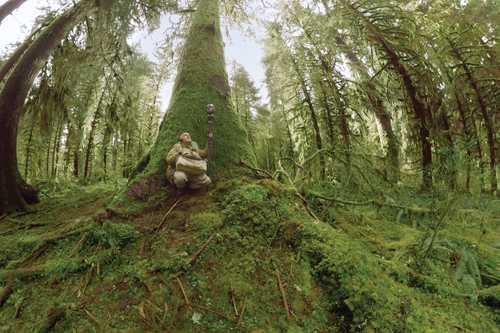
As humanity continues to decimate the Earth’s ecosystems, the natural soundscapes which they produce become ever more scarce. Here, we have collated a selection of films which relate to soundscape ecology as a discipline, to its application in the field, and more generally to the world of natural sounds.
We hope that these titles – the majority of which are freely available – will further inspire you to support and engage with that world, and with the work being carried out across the globe to preserve vulnerable, diverse habitats and celebrate their astonishing soundscapes.
Shorts:
Catalyst: ‘Soundscape’ (2016) [14 mins]
ABC Australia’s Catalyst series – which has the dubious honor of being “the only science show to air on primetime television” in the country – aims to explore “the forefront of science and technology […] [with] compelling stories looking at the latest in science from health and medical breakthroughs to astronomy, environment, and agriculture”.
This segment, from Catalyst’s 17th season, investigates what can be learnt from listening to nature. In it are discussed:
- The effect that sound recordings have had on gathering information about natural spaces, particularly the way that automated, solar-power recorders can continue to gather information long after ecologists making first-hand observations have left the field to go home, or during events which render particular areas inaccessible, such as flooding
- The use of recordings to “gauge the impact of subsistence farming, to help landowners develop their own community plans to protect biodiversity”
- Techniques to increase the information that can be read from spectrograms, by color-coding them.
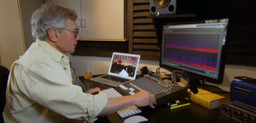
Also included is an interview with soundscape-ecology pioneer Bernie Krause, who discusses his acoustic niche hypothesis, and the great tragedy of the spreading silence which is denying us the ability to understand the rest of what he calls “the creature world”.
Indie Alaska: ‘Making Music with Glaciers and Snow’ (2019) [6 mins]
The Indie Alaska series, produced by the non-profit Alaska Public Media, delivers “a fresh and authentic look at” life in the least densely populated and northernmost US state, capturing “the diverse and colorful lifestyles of everyday Alaskans at work and at play”; all episodes are available here.

‘Making Music with Glaciers and Snow’ profiles Matthew Burtner, a composer who, “like most other Alaskans, has a front-row seat to climate change”. To increase climate-change awareness, he has created an album, Glacier Music: Ecoacoustics of Glaciers, which combines instrumentation with soundscapes from the Alaskan wilderness, including “the sounds of snow, trickling streams, and the cracks, pops, and thundering as glaciers break apart and fall”.
👉 The full Glacier Music album, which “poignantly depicts the precarious situation of these natural wonders, leaving listeners both awed and perhaps inspired to take action”, can be streamed or bought here.
It’s Time to Listen (Louisa Gilbert, 2020) [7 mins]
Available to watch on WaterBear, “the first interactive streaming platform dedicated to the future of our planet”, documentary short It’s Time to Listen tells the story of researchers who saw the COVID-19 pandemic as an opportunity. During this period, while the sea was temporarily “free from the chugging, droning, and ear-splitting sounds of cruise ships”, members of OrcaLab, a nonintrusive whale research station on Vancouver Island, Canada, took the chance to investigate whale communication in “a quieter underwater world”.
As Louisa Gilbert, the film’s director, states, “Whales evolved in a quiet ocean and communicate with sounds and songs. […] But in the past 100 years, boat noise has increased.” Due to these human-generated changes to their environment, whales are no longer able to hear their prey, and their ability to communicate is impaired – effects which both endanger these species.
The film documents OrcaLab whale researchers’ attempts to use this unique lull in human activity to prove the harm which the underwater sound pollution caused by ships and boats does to whales, and how relocation of shipping lanes could reduce that impact.
👉 Trailer here.
👉 See also: the feature-length Sonic Sea.
Listen | Écoute (David New, 2009) [6 mins]

Across just a few precious minutes, this film from the National Film Board of Canada brings the viewer face to face with composer, writer, educator, and founder of the World Soundscape Project, R. Murray Schafer – one of the fathers of acoustic ecology, who passed away in 2021 – as he encourages us to “listen carefully and marvel” at the “miraculous” soundscapes around us.
It is a privilege to spend time with “the composer [who] influenced curious creatives […] [to] hear the wild’s distress cries and fill up hard drives with recordings of ecosystems all over the world”. “I think if you listen carefully, your life is enhanced”, he says, advocating for us to use our senses fully.
Before it was possible to make recordings, “every sound ‘committed suicide’ […]. In some ways, that made people more perceptive and more considerate of the soundscape they were living with” – a valuable but sobering reminder that “each new generation […] will hear more human-caused silence […], a void then filled with unnatural sounds”.
Ludovico Einaudi: Elegy to the Arctic (2016) [3 mins]
In 2016, in order to support calls for the protection of Arctic waters, Italian composer and pianist Ludovico Einaudi collaborated with Greenpeace for the premiere performance of his haunting ‘Elegy for the Arctic’. Against the backdrop of the Wahlenbergbreen glacier, on the Norwegian archipelago of Svalbard, he played this specially composed original composition on a floating platform, as the glacier calved behind him.
In so doing, Einaudi added his voice to the eight million petitioners demanding that the Convention for the Protection of the Marine Environment of the North-East Atlantic, or OSPAR Convention (named for the 1972 Oslo Convention on dumping waste at sea and the 1974 Paris Convention on land-based sources of marine pollution) secure the first protected area in Arctic international waters. Of 15 governments, this measure was opposed by Norway, Denmark, and Iceland, but protection for the Arctic is becoming increasingly crucial since decreasing amounts of sea ice leave it more and more vulnerable “to exploitation for fishing and oil drilling”.
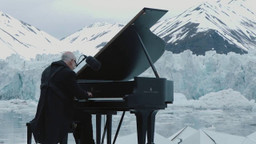
👉 A brief behind-the-scenes video is also available to view, here, which shows Einaudi speaking from aboard Greenpeace’s former icebreaker, the Arctic Sunrise.
Sanctuaries of Silence (Adam Loften and Emmanuel Vaughan-Lee, 2018) [7 mins]
It is the belief of acoustic ecologist Gordon Hempton that noise pollution has come to affect even the farthest-flung remaining wildernesses on Earth. Silence, therefore, “might be on the verge of extinction”. Here, Hempton journeys into “one of the quietest places in North America”, the Hoh Rain Forest in Washington state’s Olympic National Park. He “defines silence not as the absence of sound, but as the absence of noise from modern life”, so, for 35 years, Hempton has chosen to record the sounds of the wild Hoh.
However, even in this remote landscape, where protections are in place against commercial logging, airplanes increasingly “fly over the rain forest en route to Seattle, emitting a dull roar that punctures the silence of the landscape”.
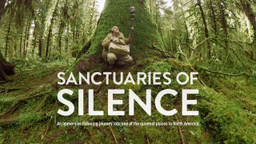
Nevertheless, the filmmakers relate how, joining Hempton in listening through a microphone, they became “completely present in the landscape and deeply connected to the space […], surprised by the intricate sounds of life, […] [and] attuned to nature”. The film, combined with listening exercises provided on its website, is therefore intended to give viewers “a new perspective toward sound and the power of silence […] [and] an opportunity to experience place through sound”.
👉 Trailer here.
👉 See also: the mid-length ‘Gordon Hempton Wants to Save Silence from Extinction’.
Medium length:
TEDxAmazônia: ‘Gordon Hempton Wants to Save Silence from Extinction’ (2011) [18 mins]
The TEDxAmazônia event took place in 2010, in Manaus, a city at the center of the Brazilian Amazon rainforest. This two-day nonprofit conference gave a platform to upwards of 50 thinkers, from the arts, technology, science, and business, to speak on the subject of quality of life for all species on the planet.
The final speaker was Gordon Hempton. Expanding on Sanctuaries of Silence (see above), in this filmed presentation, he lays out his story. One day, 30 years ago, he fell asleep on the grass. Awoken by the sound of thunder, which “roared through” him, he realized that, at 27, “This was the first time that I truly listened.”
This moment of perception put him on the path to becoming an advocate for preserving ‘natural silence’ (ie, the sounds of the natural world, unpolluted by anthropophony). Hempton evocatively describes the Earth as “a solar-powered jukebox” – yet “there are only 12 places left” in which its song can be heard for more than 15 minutes without impingement by noise pollution.
👉 Watch the full talk for more of Hempton’s unique and ear-opening perspectives.
Nature’s Orchestra (Robert Hillman, 2016) [23 mins] $1.99
This documentary affords the viewer another encounter with soundscape-ecology elder Bernie Krause (see also Catalyst: ‘Soundscape’). On an expedition into the Arctic – an area affected by climate change “at more than twice the rate of change in temperate and tropical regions” – he not only demonstrates how natural sounds act as vital signifiers of wild spaces’ health, but also their role in the birth of music. Then, in Northern California, we see Krause share soundscape recordings with high school students.
The film also highlights another side of Krause’s practice: his musical career. As both sales representatives for the Moog company and musicians in their own right, Krause is recognised, alongside Paul Beaver, for his part in bringing the synthesizer to the worlds of film and pop music. Later work, which integrates natural sounds into orchestral settings – pieces composed in collaboration with Richard Blackford for the Great Animal Orchestra symphony, and a ballet, Biophony – are used as part of the score of Nature’s Orchestra.
Engaging with the work of such a prolific soundscape recordist – by visiting every continent since the late 1960s, Krause has recorded upwards of 15,000 species – is also sadly instructive, in that “over half of the soundscapes he has recorded are now silent or can no longer be heard in their original form”.
👉 Trailer here.
👉 Also, keep an eye (and/or an ear) out for Bernie Krause, a Life with the Great Animal Orchestra (Vincent Tricon, 2021), a 40-minute short “composed of unpublished archival footage and interviews”. A trailer can be viewed here, but the film itself is not yet available online at the time of writing.
Sonic Forest (Simón Hernández and Josh Thome, 2020) [35 mins]
Produced by Stand for Trees, Sonic Forest documents Simón Mejía, founder of Colombian electro-cumbia band Bomba Estéreo, as he explores the Pacific Forest Communities initiative. As part of this program, Coastal Afro-Colombian communities have come together with Indigenous peoples in the mountains to help safeguard half a million hectares of forest and mangroves on the country’s Pacific coast.
In addition, the program aims to “provide clean water, scholarships, and health centres to more than 60,000 people” in these communities; generate sustainable economic growth; provide access “to healthcare, education, energy, and basic services […] and to build capacity in administration, governance, and management”.
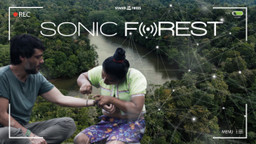
On this journey, Mejía recorded both the forest and the communities he encountered, and responded by intertwining both in his original soundtrack for the film. The music video for its theme song, ‘Sonic Forest (Déjame respirar / Let Me Breathe)’, which features Bomba Estéreo and vocals by Li Saumet and Nidia Góngora, can be viewed here.
Containing approximately 10% of the planet’s species of flora and fauna, Colombia is one of the 12 most megadiverse countries. However, in its deprived areas, illegal logging is frequently the sole source of income, driving forest habitats’ deterioration into pasture and agricultural land. This Joaquin Phoenix-endorsed film is intended to be the first of four produced by Stand for Trees to inspire “people to take action to protect forests around the world”.
👉 Trailer here.
🌳 Support Stand for Trees here, by buying certificates which represent the tonnes of carbon being saved by the organization’s projects.
Feature length:
Dusk Chorus (Nika Šaravanja and Alessandro D’Emilia, 2017) [1 h 2 mins]

This documentary is based on Fragments of Extinction, an “eco-acoustic” art project by Italian electro-acoustic researcher David Monacchi, which “combines art and data visualization through spectrograms and audio captured during his expeditions to the Amazon, Borneo and Central Africa”. Dusk Chorus further seeks to draw attention to the ecocide of such biodiversity hotspots: “What took 4 billions years to evolve is vanishing in the blink of an eye.”
The film folds together lectures given by Monacchi, which elucidate the issues around these subjects, with footage of him carrying out fieldwork as part of “a quest to record 24-hour 3-dimensional sonic portraits” of high-biodiversity areas. The outcome highlights the urgency of communities’ and habitats’ precariousness in the face “of habitat loss, invasive industry and climate change”.
👉 Trailer here.
Sonic Sea (Michelle Dougherty and Daniel Hinerfeld, 2016) [1 h] $2.99
In Sonic Sea, the directors explore the threat that man-made undersea noise poses to “the survival and prosperity” of life within what they describe as the “sonic symphony” of the oceans, and how that life can be defended. In the seas – “dynamic, living symphonies of sound” – sound is able to travel five times faster than in air, and carries many times further. Having developed within this environment, marine life naturally depends upon these advantages by using “sound to hunt for food, find mates, and detect predators”.

Unnatural sounds occurring in the ocean are therefore deeply disruptive to animals like whales and dolphins, as they inhibit their ability to hear and be heard. The principal types of ocean noise are caused by the commercial, industrial, and military sectors:
- Shipping: at any moment, “up to sixty thousand commercial ships [are] traversing our seas worldwide”, each one generating intense noise from their propellers and engines
- Sonar: “naval warships generate extremely loud waves of sound that sweep the ocean” in order to detect enemy submarines. Its negative effects on marine life has been responsible for “mass whale strandings from the Canary Islands and the Caribbean to Japan”
- Seismic: the seismic airguns used by petrochemical companies to survey for the presence of oil and gas are responsible for “acoustic explosions [which can] continue for days or weeks on end”, with a hugely detrimental effect on whales’ and fish populations’ behavior.
Further detail can be learnt from Impacts of Noise on Marine Mammals, a related report prepared by non-profit international environmental advocacy group the Natural Resources Defense Council, and animal welfare and conservation charity the International Fund for Animal Welfare.
👉 Trailer here.
🐳 Take a stand against ocean noise here.
El silencio que queda | The Silence That Remains (Amparo Garrido, 2019) [1 h 10 mins] $3.00
Juan Carlos was the “partner and best friend” of director Amparo Garrido. “He died very suddenly and left behind a huge silence”; subsequently, Garrido found a newspaper clipping which he had left for her to find. It told the story of José Carlos Sires, an ornithologist who had been blind since he was six years old, yet who could identify nearly two hundred species of bird species by sound alone.
“It’s not that blind people have sharper hearing, but more a case of sighted people not taking the trouble to make good use of what they have…”
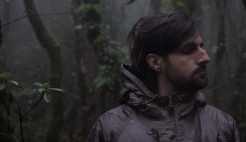
Garrido, a Spanish visual artist who works with photography and video, describes The Silence That Remains as having been made with “eyes shut tight”. Structured around two years’ worth of WhatsApp voice notes exchanged with Sires, rather than according to a conventional script, the film was the intuitive outcome of a journey she set out on to investigate themes including “mechanisms of non-verbal communication, the relation between animal nature, blindness, and absence, the search for subjective truth, and the effects of blind chance and/or the unconscious”.
“I like to think that he [Juan Carlos] left me a commission, an encounter with the beauty that overwhelms us from two ways of approaching the world: looking and listening”. “Who would have thought that it would take a blind person to teach me how to see?”
👉 Trailer here.
This selection only scratches the surface of the range of films engaging with soundscape ecology and related topics. Let us know your thoughts on these titles in the comments below, and let us know if you’re aware of any others which you would like to share with the Earth.fm community!
Earth.fm is a completely free streaming service of 1000+ nature sounds from around the world, offering natural soundscapes and guided meditations for people who wish to listen to nature, relax, and become more connected. Launched in 2022, Earth.fm is a non-profit and a 1% for the Planet Environmental Partner.
Check out our recordings of nature ambience from sound recordists and artists spanning the globe, our thematic playlists of immersive soundscapes and our Wind Is the Original Radio podcast.
You can join the Earth.fm family by signing up for our newsletter of weekly inspiration for your precious ears, or become a member to enjoy the extra Earth.fm features and goodies and support us on our mission.
Subscription fees contribute to growing our library of authentic nature sounds, research into topics like noise pollution and the connection between nature and mental wellbeing, as well as funding grants that support emerging nature sound recordists from underprivileged communities.

